17 Most Common Types of Butterflies in Washington (With Pictures)
-
Pete Ortiz
- Last updated:
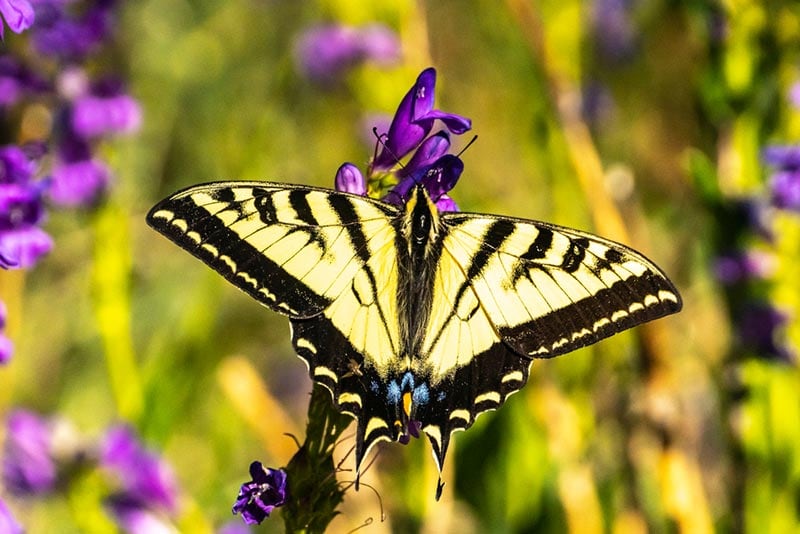
Residents are not the only ones who love Washington summers; butterflies are also fond of the warm air. No summer is complete without a few sightings of butterflies in both rural and urban neighborhoods.
There are over a hundred species of butterflies in Washington, and they all have unique patterns, colors, and habits. While we can’t list all of them, we can introduce you to a few of the most commonly sighted ones in the state.
This list has 17 of the most frequently sighted Washington butterflies for you to test your identification skills. We’ve split them into various categories: brush-footed butterflies; coppers, whites, yellows, and hairstreaks; and swallowtails.
The 17 Common Types of Butterflies in Washington
1. American Lady
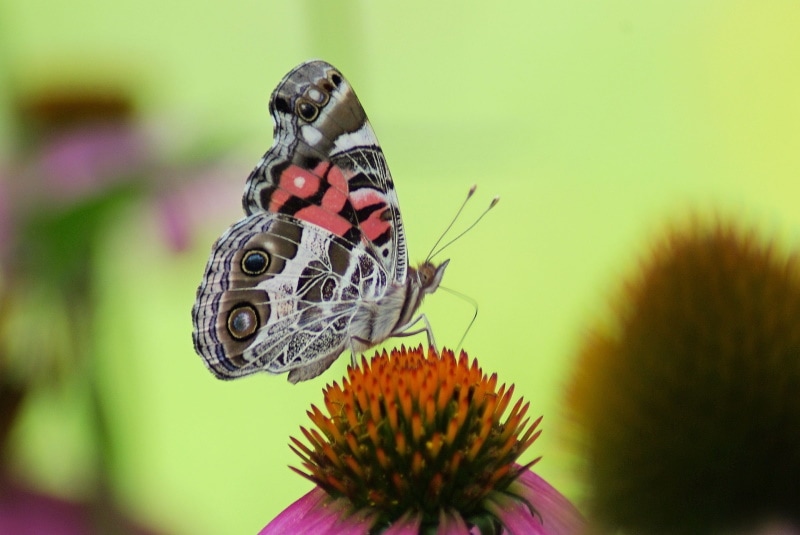
| Scientific Name: | Vanessa virginiensis |
| Wingspan: | 1.75–2.4 inches |
| Habitat: | Open landscapes with flowering, leafy plants |
Also commonly known as the American painted lady, painted beauty, and Hunter’s butterfly, the American lady¹ is a frequent sight in western Washington. They’re recognized by the white and purple spots on the top side of their wings and the cobweb markings and eyespots on the underside. With reddish-orange coloring and bold borders, they’re one of the most colorful butterflies in Washington.
Although timid and prone to taking flight at the tiniest disturbance, the American lady can be found in open grasslands. They’re especially fond of areas with plenty of flowering plants and leaves.
2. Monarch
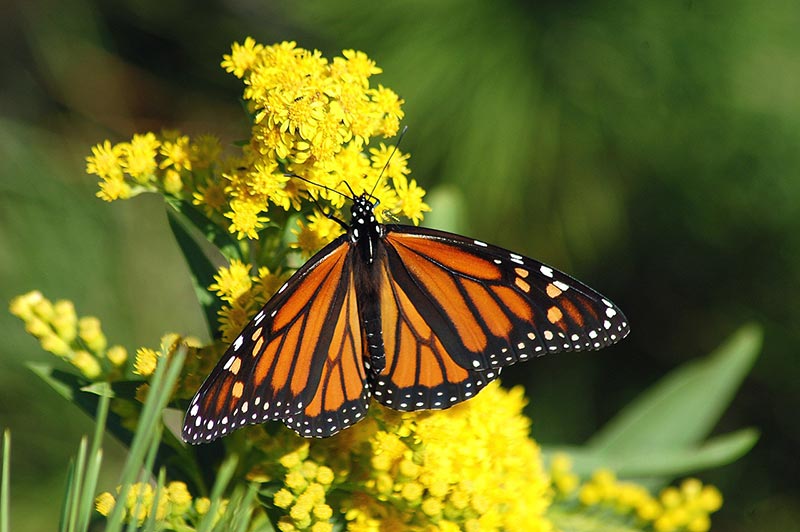
| Scientific Name: | Danaus plexippus |
| Wingspan: | 3.5–4.13 inches |
| Habitat: | Open meadows or beside roads |
One of the largest butterflies that you can find all over Washington is the monarch¹ butterfly. Despite their diminishing numbers due to wildfires and commercial pesticides, the monarch is still one of the most recognizable insects. The species is also commonly used as a mascot for organizations due to the striking, easily recognized stained-glass patterning of orange, black, and white markings on their wings.
They’re a migratory species and will travel long distances searching for milkweed plants. While they can be found year-round in the southern states where they spend winter, in Washington, you can find them during the summer months, from May to early fall.
3. Lorquin’s Admiral

| Scientific Name: | Limenitis lorquini |
| Wingspan: | 2–2.63 inches |
| Habitat: | Forest edges, canyons, open grasslands, streamsides, and orchards |
The Lorquin’s admiral¹ might not be as vibrantly colored as some of the more noticeable species in Washington, but they’re still a spectacular sight as they flutter around your flower patch. They’re also not as widely distributed as many other common species, with their population mostly limited to the western states, including Washington.
Lorquin’s admiral butterflies are primarily black with vibrant white spots and reddish-orange wingtips. Despite their dark coloring, they’re among the easiest butterflies to identify. They’re most common during June and August but can be found from February to October.
4. Great Spangled Fritillary
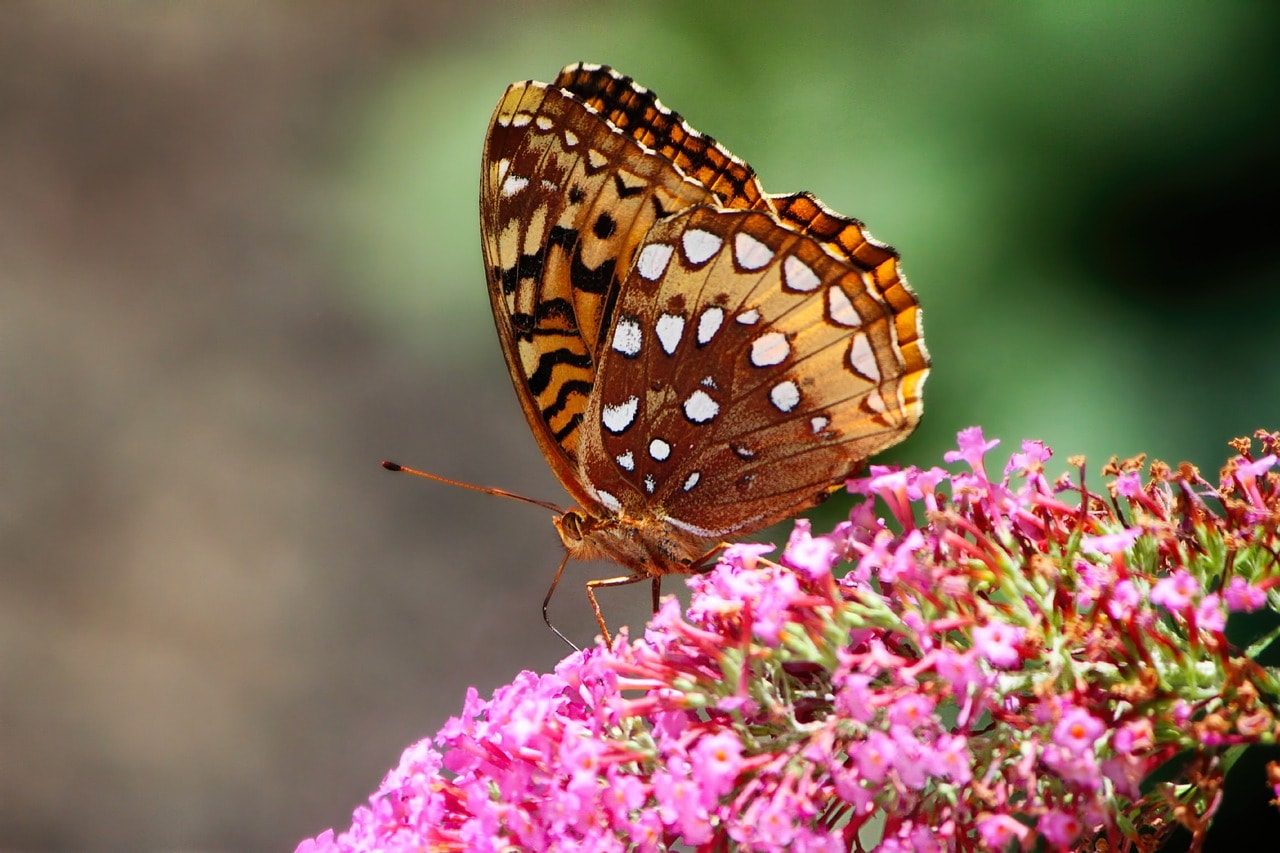
| Scientific Name: | Speyeria cybele |
| Wingspan: | 2.4–3.46 inches |
| Habitat: | Gardens, roadsides, meadows, and often close to water sources |
One of the more difficult butterflies to identify is the great spangled fritillary¹ due to how their appearance changes depending on the part of the continent you find them in. The species can be orange, brown, or a shade somewhere in between. No matter what their overall coloring is, though, they always have a row of white spots along the edge of their wings, yellow banding, and black markings.
With a fondness for lingering near water sources and violets, they’re frequently found in gardens, parks, meadows, and roadsides. Along with their presence in Washington, they’re found throughout the U.S.A., except in Arizona, Florida, Hawaii, and Texas.
5. Painted Lady
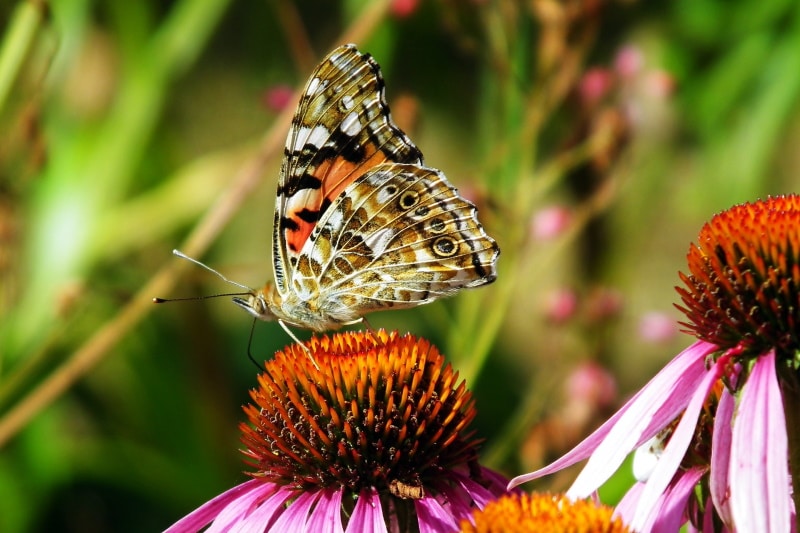
| Scientific Name: | Vanessa cardui |
| Wingspan: | 1.96–2.87 inches |
| Habitat: | Open, undisturbed areas |
Native to the U.S.A., the painted lady¹ butterfly is a common and easily recognized sight in Washington. Although they’re migratory and often seen during the summer, they can be found in areas that experience mild winters throughout the year.
Like other recognizable species, the painted lady has a reddish-orange coloring with bold black patterning and white spots. They’re also known to have hints of orange and pink on their wings, along with blue and yellow eyespots to ward off predators.
6. Red Admiral

| Scientific Name: | Vanessa atalanta |
| Wingspan: | 1.57–2.95 inches |
| Habitat: | Moist areas and the edge of forests |
Recognized by the bold red markings on their dark wings, the red admiral¹ butterfly is one of the easiest insects to spot in Washington. Along with their distinctive red markings, they have white spots at the top of their wings and patches of blue on their tails.
Their migration habits send them from the warmer southern states and Mexico to the cooler northern regions and back again, with a wide range of habitats. If you’re new to identifying butterflies, the red admiral is widespread and easy to spot for the beginner.
7. California Tortoiseshell
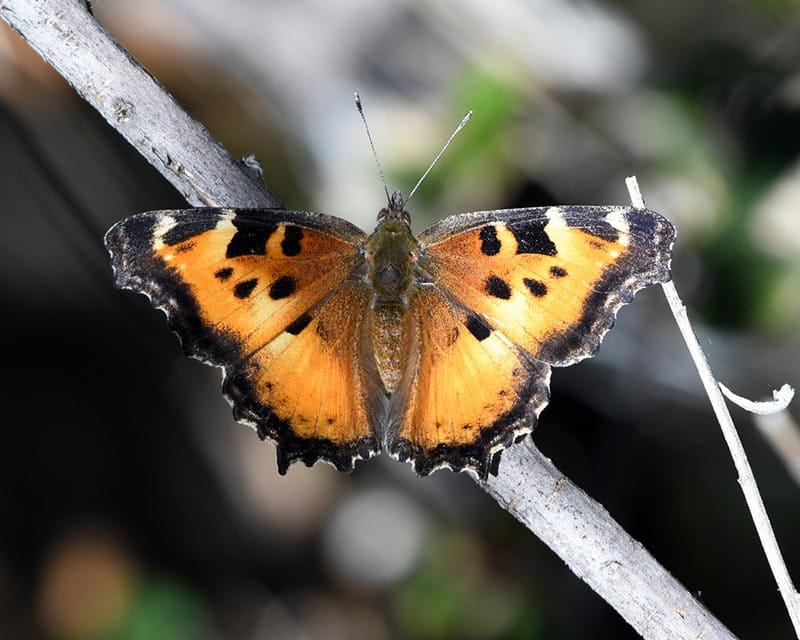
| Scientific Name: | Nymphalis californica |
| Wingspan: | 1.25–2.75 inches |
| Habitat: | Woodland, forest edges, open clearings, and brushy areas |
With the bark-like coloring of the underside of their wings, the California Tortoiseshell¹ blends in well in their preferred habitat of woodland and forest edges. Despite their natural camouflage, the topside of their wings is a bright orange with a dark border and black and white spots.
They’re not as common as the red admiral, but they’re a recognizable sight in many of the western states between March and May and then August and September. The California Tortoiseshell also prefers altitudes above 1,000 feet and is more common in mountain foothills.
8. Mourning Cloak
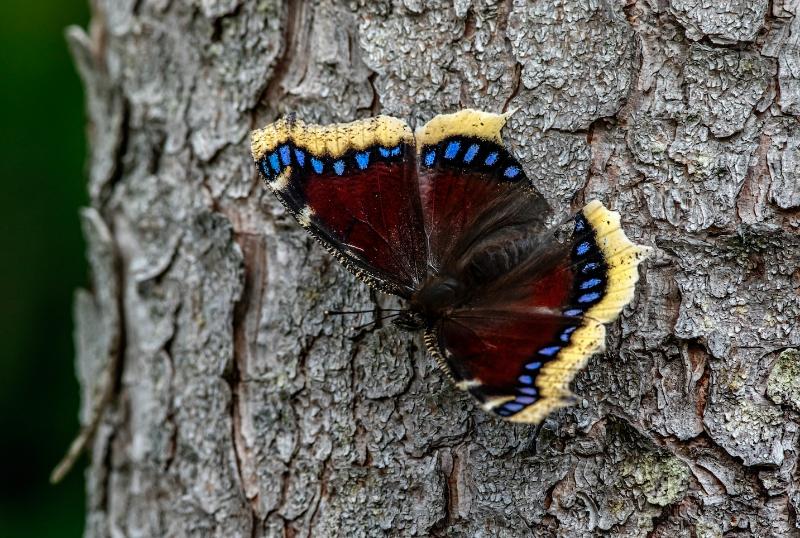
| Scientific Name: | Nymphalis anitopa |
| Wingspan: | 2.87–3.38 inches |
| Habitat: | Near running water, gardens, and meadows |
As their name suggests, the mourning cloak¹ butterfly is one of the species with a more subdued coloring. However, they also have a flair for dramatics. The bright yellow border on their wings, blue spots, and the overall velveteen reddish-brown make them one of the prettiest species in Washington. Their wingspan of 2.87–3.38 inches also makes them one of the biggest butterflies on this list.
The mourning cloak will hibernate during the winter months and will often be the first species spotted in springtime. They’re common through the summer, with a few appearances in the fall if you’re lucky.
9. Satyr Comma
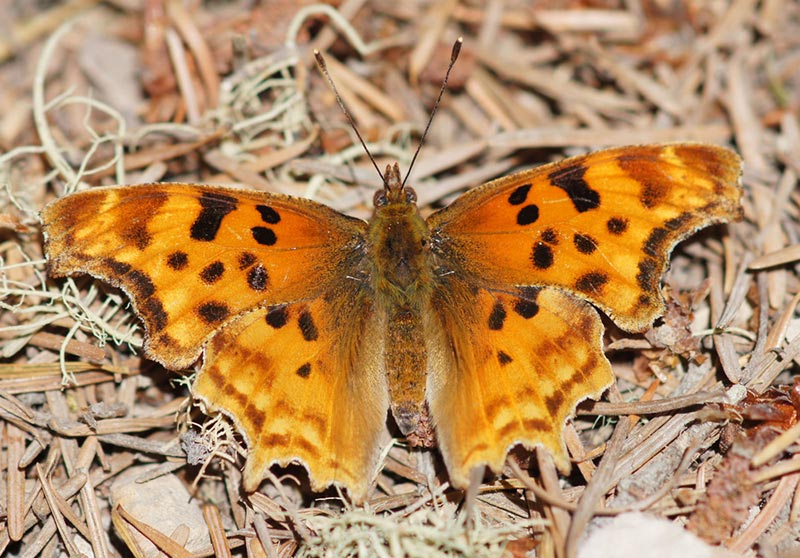
| Scientific Name: | Polygonia satyrus |
| Wingspan: | 0.98–1.37 inches |
| Habitat: | Valleys, streamsides, woodland, marshes, forest edges, and moist fields |
Gaining their name from the distinct silver comma on the underside of their wings, the satyr comma¹ butterfly is found throughout Washington from February to November. You’ll most likely find them in moist areas in valleys, woodland, marshes, forest edges, and fields and by running water. The species doesn’t tend to stray from their preferred habitat, and they’ll hibernate during winter.
Although they’re among the smallest butterflies found in Washington, they share a similar reddish-brown coloring with other brush-footed butterflies. They’re recognized by their yellowish banding, dark spots, and light-brown border on their wings.
10. Milbert’s Tortoiseshell
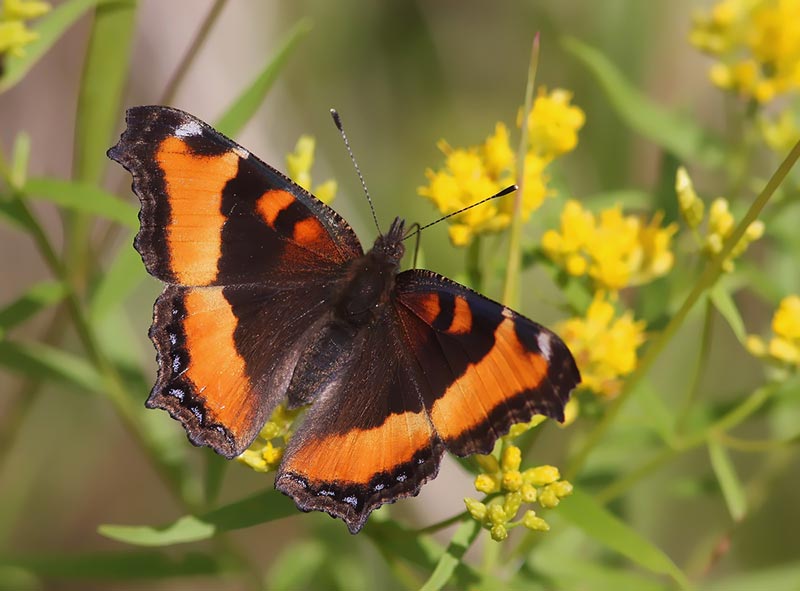
| Scientific Name: | Aglais milberti |
| Wingspan: | 1.33–2.48 inches |
| Habitat: | Moist woodland areas, pastures, and marshes |
With a fondness for moist areas, the Milbert’s tortoiseshell¹ butterfly resides in woodland, pastures, and marshes throughout Washington. Their coloring makes them a distinctive sight for new and experienced butterfly spotters. The dark areas of their wings are highlighted with red patches and bordered with thick yellow-orange bands. They also have a black border at the edge of their wings with pale blue spots.
Milbert’s tortoiseshell butterflies often hibernate in groups with others of their species and will be the most active between May and October.
Coppers, Whites, Yellows, and Hairstreaks
11. Cabbage White
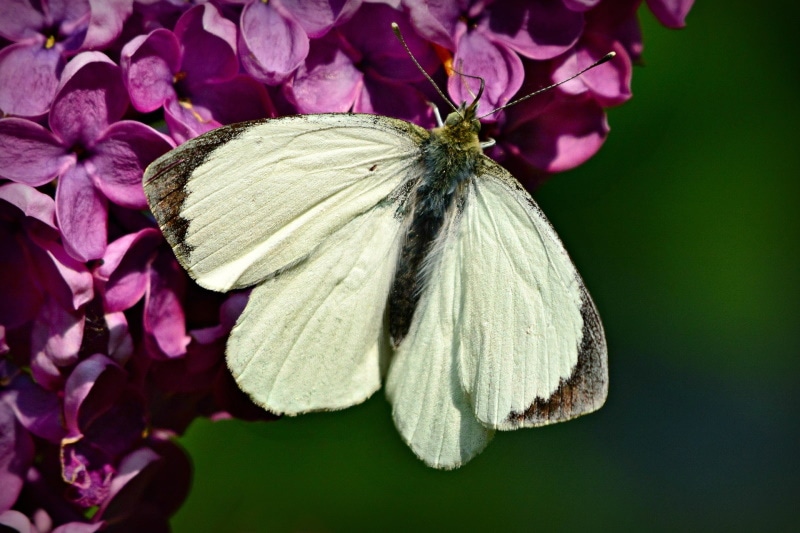
| Scientific Name: | Pieris rapae |
| Wingspan: | 1.18–1.96 inches |
| Habitat: | Fields, meadows, parks, and urban gardens |
The pale coloring of their wings gives the cabbage white¹ butterfly an innocent appearance, but while the adult butterflies themselves pose no risk to plants and are considered beautiful to some people, they are an invasive species in Washington. The larva will eat cabbage, mustard-related plants, broccoli, and cauliflower, along with many other garden plants throughout the spring, summer, and fall.
Cabbage white butterflies are recognized by the yellow or greenish tint to the underside of their wings and the dark spots on their forewings.
12. Clouded Sulphur
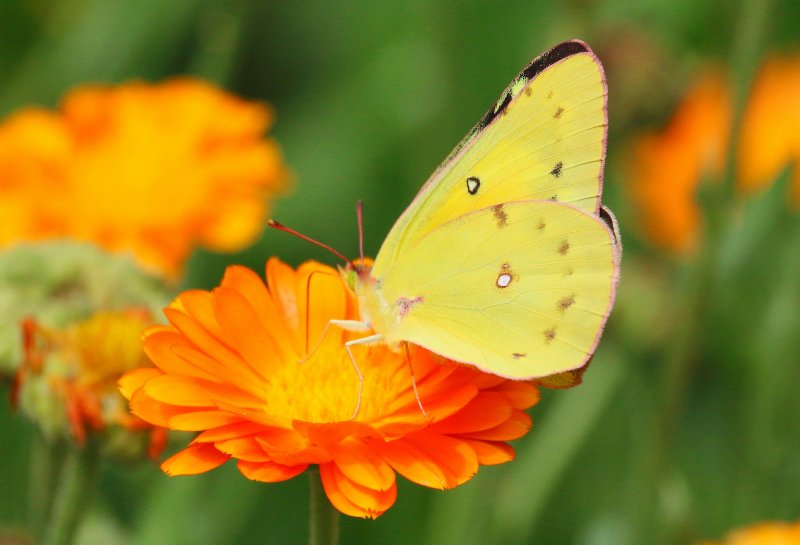
| Scientific Name: | Colias philodice |
| Wingspan: | 1.37–2 inches |
| Habitat: | Meadows, parks, fields, gardens, and muddy areas |
Named after the bright yellow color of sulfur, the clouded sulphur¹ butterfly is one of the brightest butterfly species in Washington. The vibrancy of their coloring depends on their sex, with females being bright yellow or greenish white and males having a deeper, butter-like hue. Due to their similarities with orange sulphur butterflies, the clouded sulphur is easily misidentified by the untrained eye.
Despite their wobbly flight pattern, the clouded sulphur doesn’t meander from their migration routes. They’re found in urban and rural areas, particularly muddy spots in meadows, fields, parks, and gardens.
13. Gray Hairstreak

| Scientific Name: | Strymon melinus |
| Wingspan: | 0.78–1.37 inches |
| Habitat: | Open landscapes with flowering, leafy plants |
Unlike other hairstreak butterfly species, the gray hairstreak¹ often sunbathes with their wings open, which often makes identifying them challenging. Although they’re a pale, light gray overall, they also have bold patterning that makes them stand out. Their coloring includes thin black and white dashed lines and bold orange patches. This species also has a thin tail at the base of their hindwings.
Similarly to the cabbage white, the gray hairstreak is considered a garden pest, especially if you grow bean plants or flowers.
14. Orange Sulphur
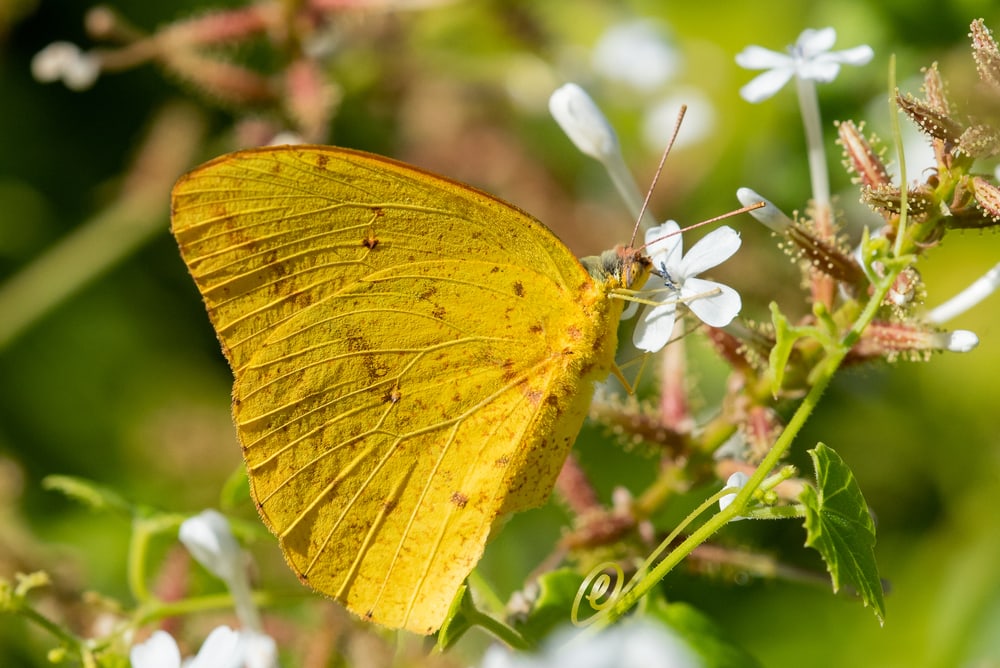
| Scientific Name: | Colias eurytheme |
| Wingspan: | 1.57–2.55 inches |
| Habitat: | Roadsides, gardens, and meadows |
One of the most difficult butterflies to correctly identify is the orange sulphur¹ butterfly due to their similarities to the clouded sulphur. Both species also interbreed, which can make even close inspections a challenge. To identify them, pay close attention to how they fly. The orange sulphur butterfly is well-known for their erratic flight pattern.
Despite their name, most male orange sulphur butterflies are primarily a buttery yellow shade, though they do have an orange patch near the abdomen. Females are mostly white. Both sexes have a black border on their wings.
15. Purplish Copper
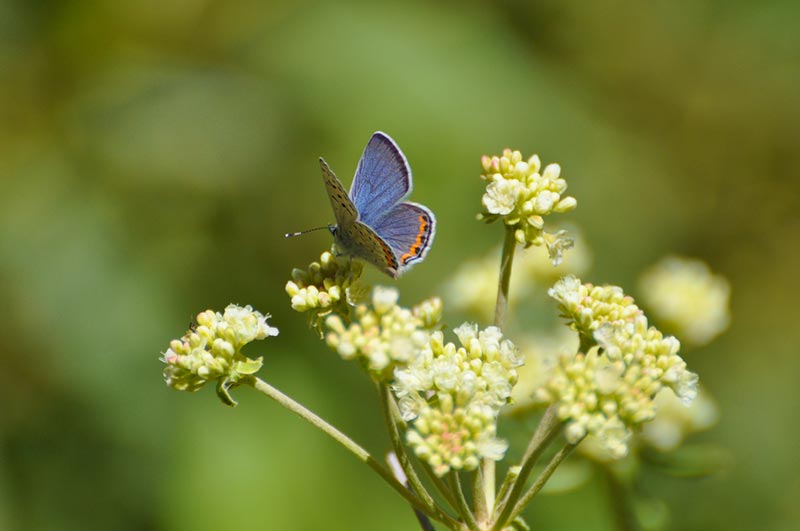
| Scientific Name: | Lycaena helloides |
| Wingspan: | 1.18–1.49 inches |
| Habitat: | Roadsides, open fields, moist meadows, marshes, valleys, and streamsides |
Although the name suggests that these butterflies are mostly purple, only the male purplish copper¹ butterfly has purple on their wings. With a mostly brown body with a purplish tint, male purplish coppers are a dazzling sight throughout Washington between May and July and again from August to October.
Compared to the males, the females are a much subtler orange shade, with no purple coloring at all. Both sexes have a bright orange line at the bottom border of their wings.
Swallowtails
16. Anise Swallowtail
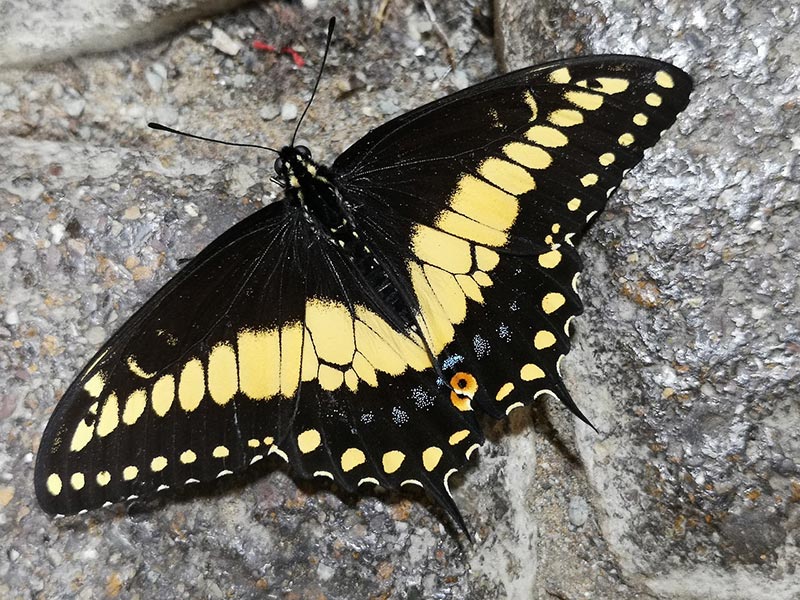
| Scientific Name: | Papilio zelicaon |
| Wingspan: | 2.63–2.99 inches |
| Habitat: | Mountains, gardens, fields, empty lots, roadsides, and bare hills |
The anise swallowtail¹ is one of the most vibrantly colored butterflies found in Washington due to the striking contrast between the black and yellow patterning on their wings. Their wings have a similar pattern to stained glass, with thin black borders breaking up the yellow coloring. This species also has a red patch at the base of their hindwings and blue spots.
Although the anise swallowtail isn’t often found at high altitudes, they’re frequent visitors to mountain areas and bare hills, as well as roadsides, gardens, and fields. In Washington, you’re most likely to see them between April and July.
17. Western Tiger Swallowtail
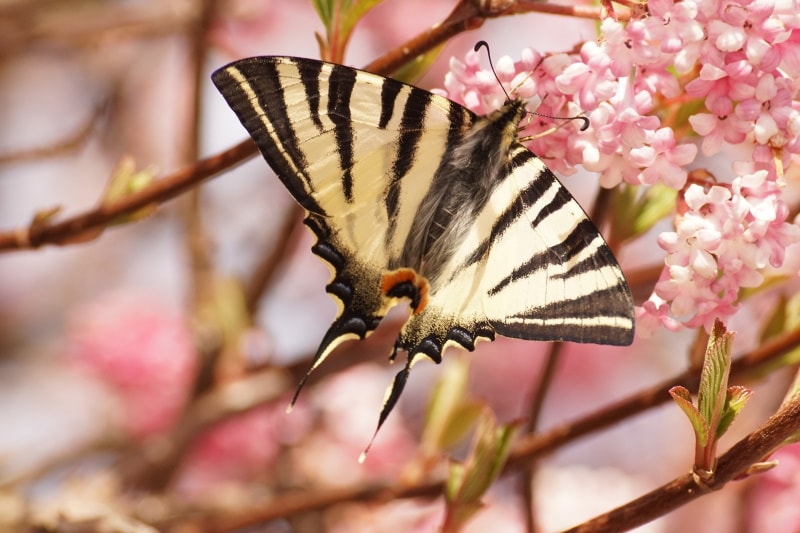
| Scientific Name: | Papilio rutulus |
| Wingspan: | 3.54–4.33 inches |
| Habitat: | Near running water, woodland, canyons, roadsides, and parks |
Sharing the same yellow base color and black patterning as other swallowtail species, the coloring of the western tiger swallowtail¹ mimics the appearance of tigers, hence their name. Distinguishable from the eastern and Canadian tiger swallowtails by the thicker stripes close to their body, they have one tail that often breaks off as they age.
The western tiger swallowtail has similar blue spots and red patches on the bottom of their wings as the anise swallowtail. They favor areas around running water but are widely distributed throughout Washington between June and July.
Conclusion
Summers in Washington are filled with warm, sunny days and frequent butterfly sightings. With their bright colors, delicate wings, and graceful flight paths, butterflies are an often welcome sight to your picnic lunch or flower garden.
Although there are more butterfly species in Washington than we can list here, several can be commonly sighted throughout the state for you to identify.
Featured Image Credit: Danita Delimont, Shutterstock
Contents


